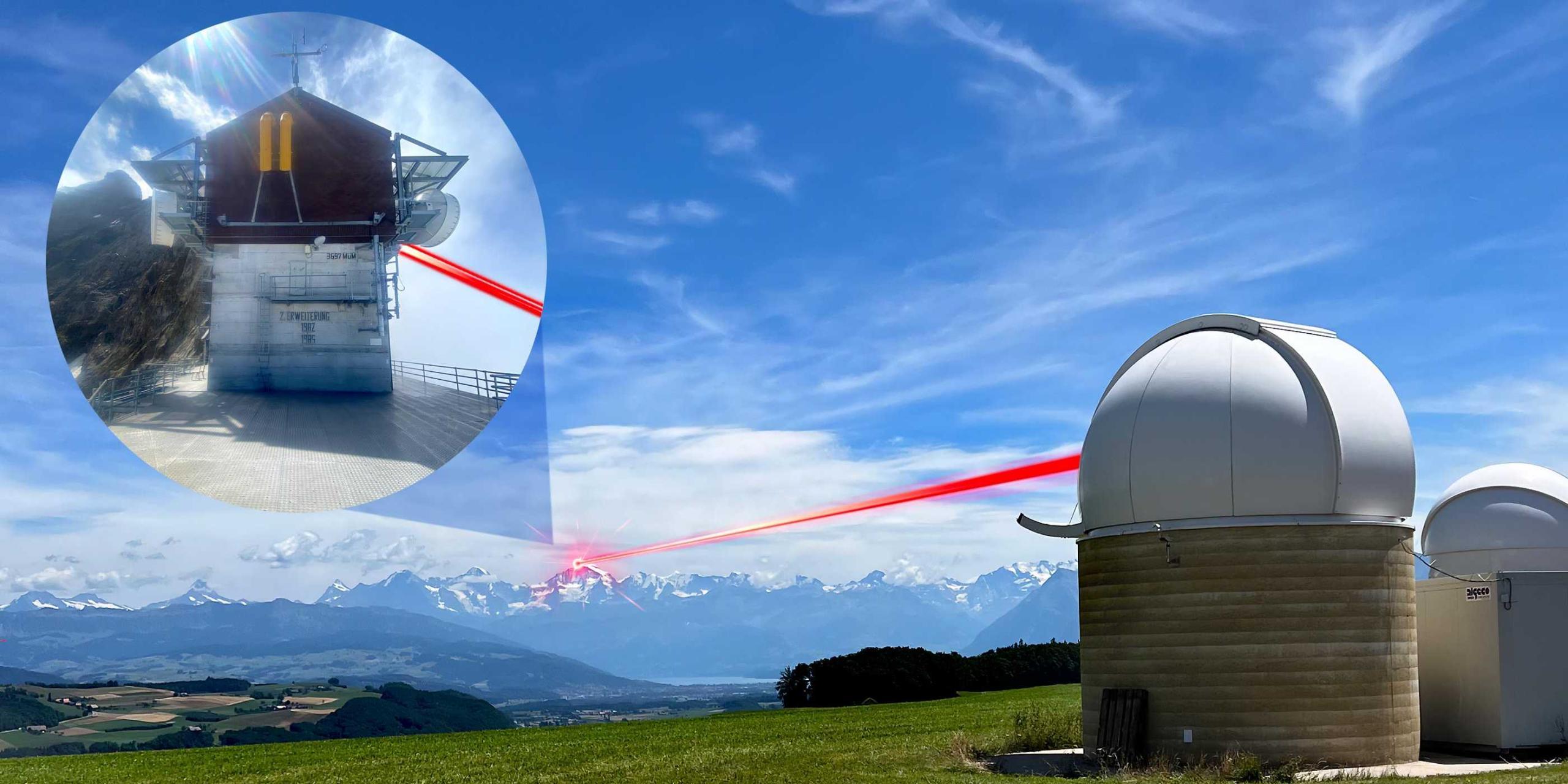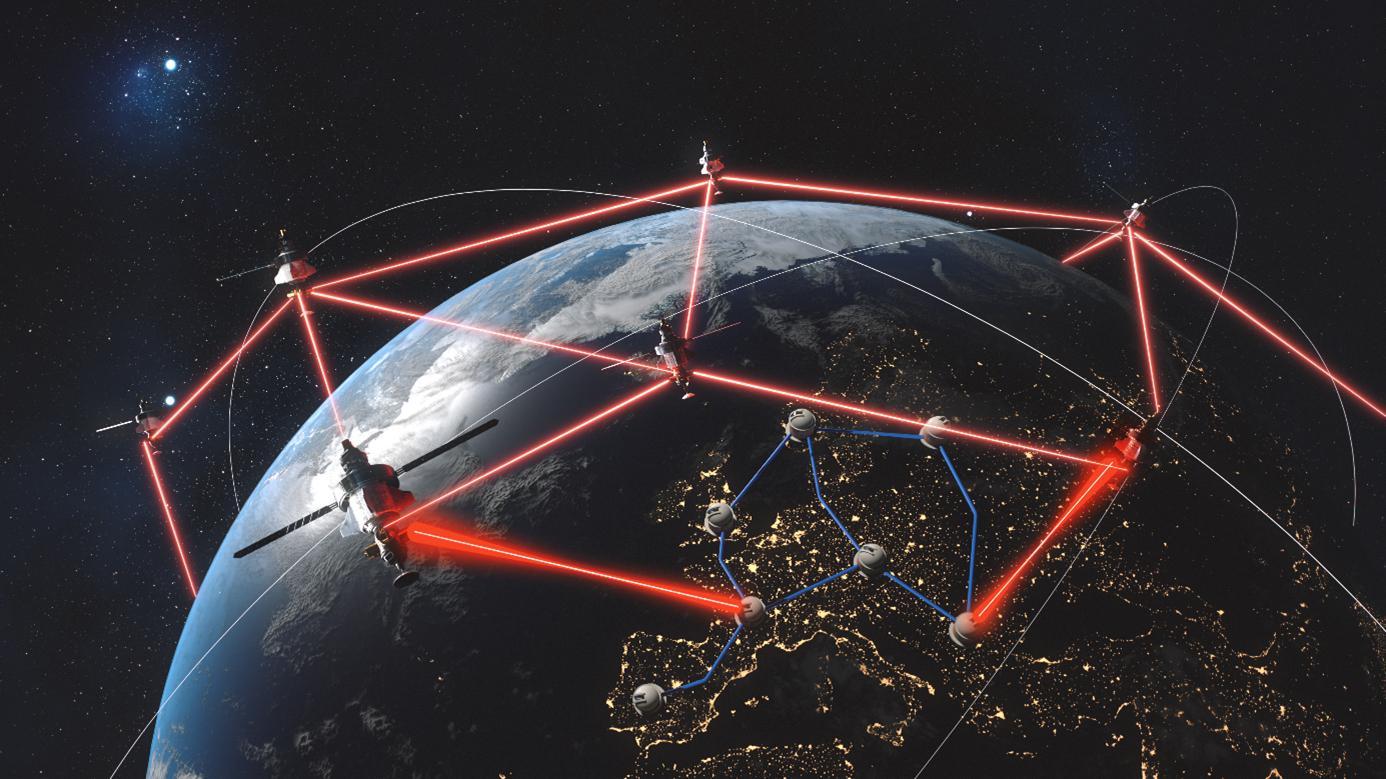
In future, satellite-based optical terabit data transmissions will be possible through the air and could replace submarine cables. This has been shown by the ETH together with partners from the aerospace industry within the context of a European Horizon 2020 project. In an experiment, they sent a laser beam 53 kilometers between the High Altitude Research Station on Jungfraujoch and the Zimmerwald Observatory of the University of Bern.
Yannik Horst explains in a press release from the ETH that for optical data transmission, this test route “is much more challenging than between a satellite and a ground station.” The reason for this is the dense atmosphere near the ground with diverse turbulence. Horst is the lead author of the study and a researcher at the ETH in the Institute of Electromagnetic Fields run by Professor Jürg Leuthold.

Unlike internet connections via satellites, such as Elon Musk’s Starlink network, which use wireless technologies with wavelengths of a few centimeters, optical laser systems work with wavelengths that are around 10,000 times shorter: just a few micrometers. As such, they can transport more information per unit of time. The chip with a matrix of 97 tiny moving mirrors from a French project partner corrects phase shifts from turbulence 1,500 times per second. Additionally, new, robust light modulation formats were used for the first time.
According to Leuthold, the results of the trial are causing a sensation worldwide: “Our system represents a breakthrough. Until now, only two options have been possible: connecting either large distances with small bandwidths of a few gigabits or short distances of a few meters with large bandwidths using free-space lasers.”
Additionally, performance of 1 terabit per second was achieved with a single wavelength. The system can easily be scaled up to 40 channels and thus to 40 terabits per second using standard technologies for future practical applications. ce/mm
Related documents
Related news
Meet with an expansion expert
Our services are free of charge and include:
- Introduction to key contacts in industry, academia, and government
- Advice on regulatory framework, taxes, labor, market, and setting up a company
- Custom-made fact-finding visits, including office and co-working space